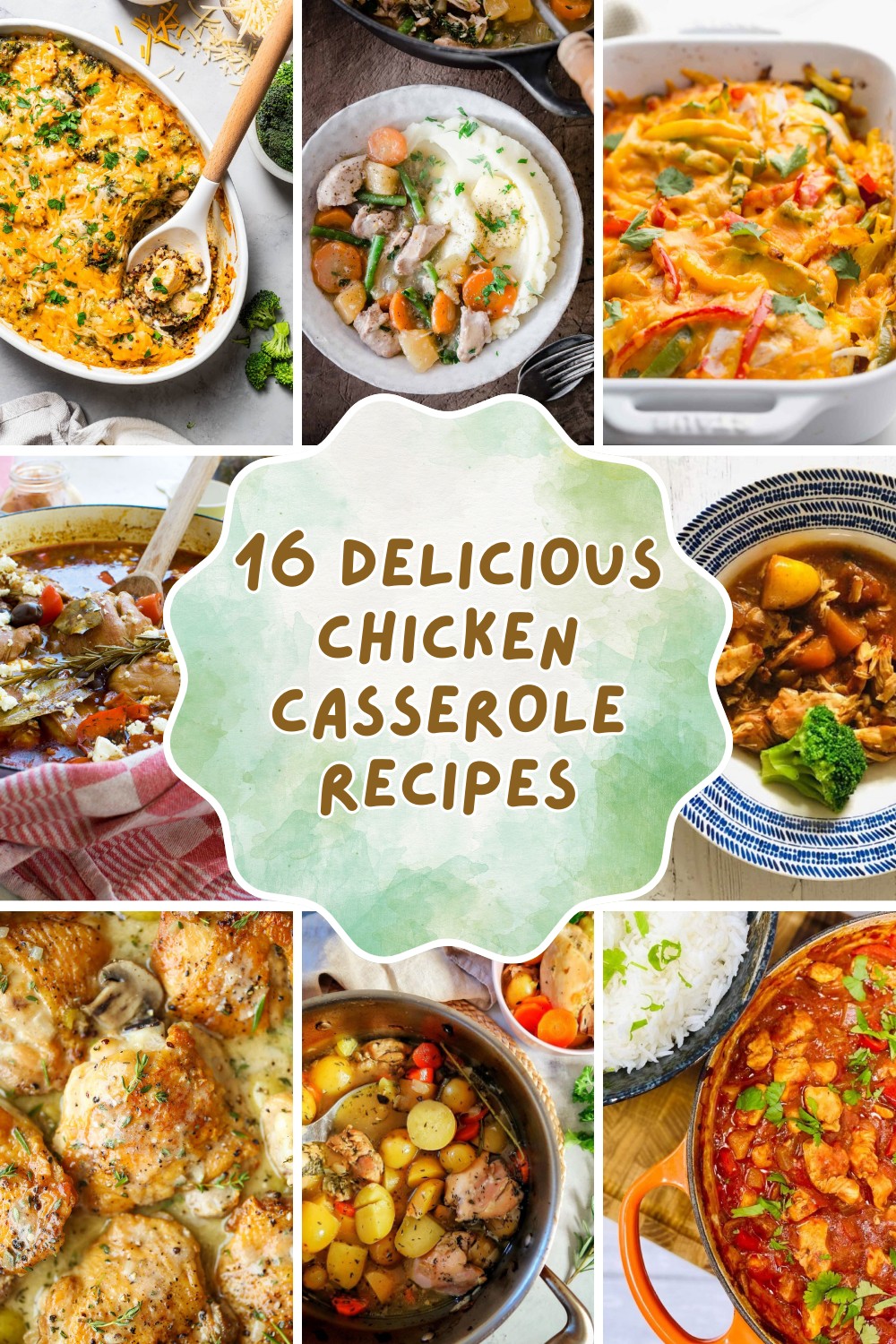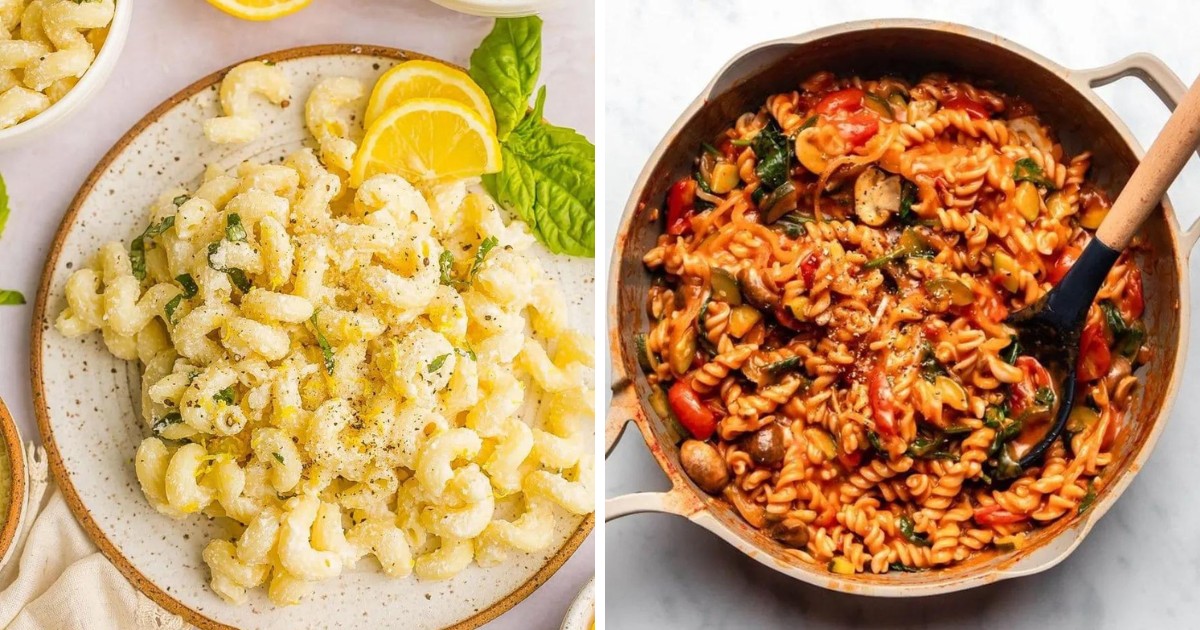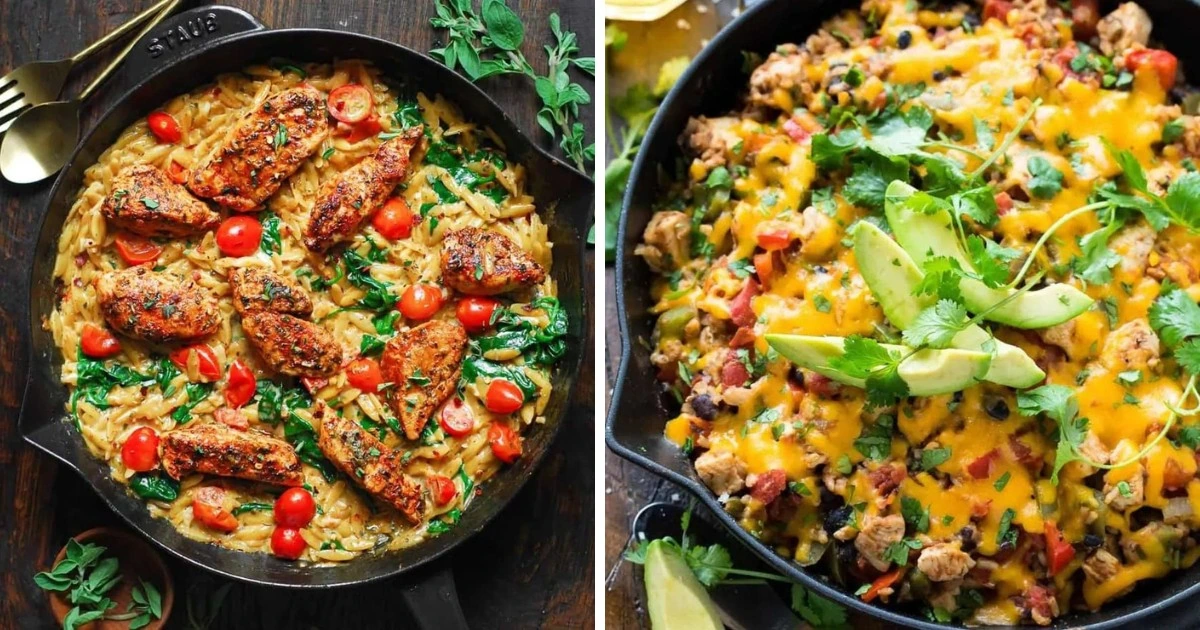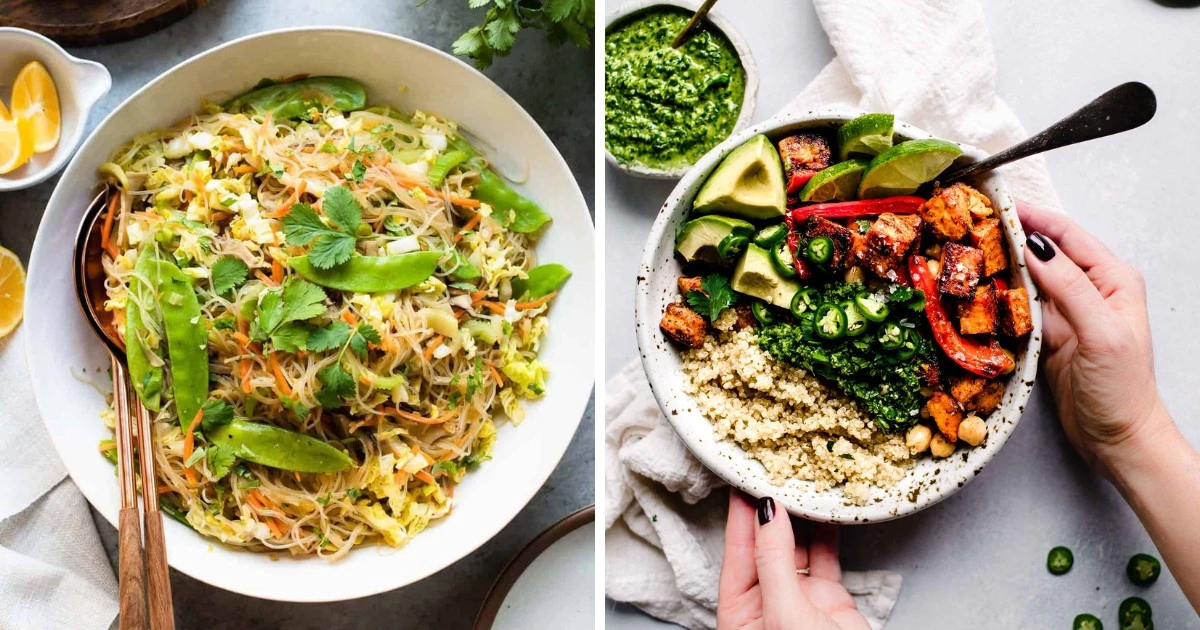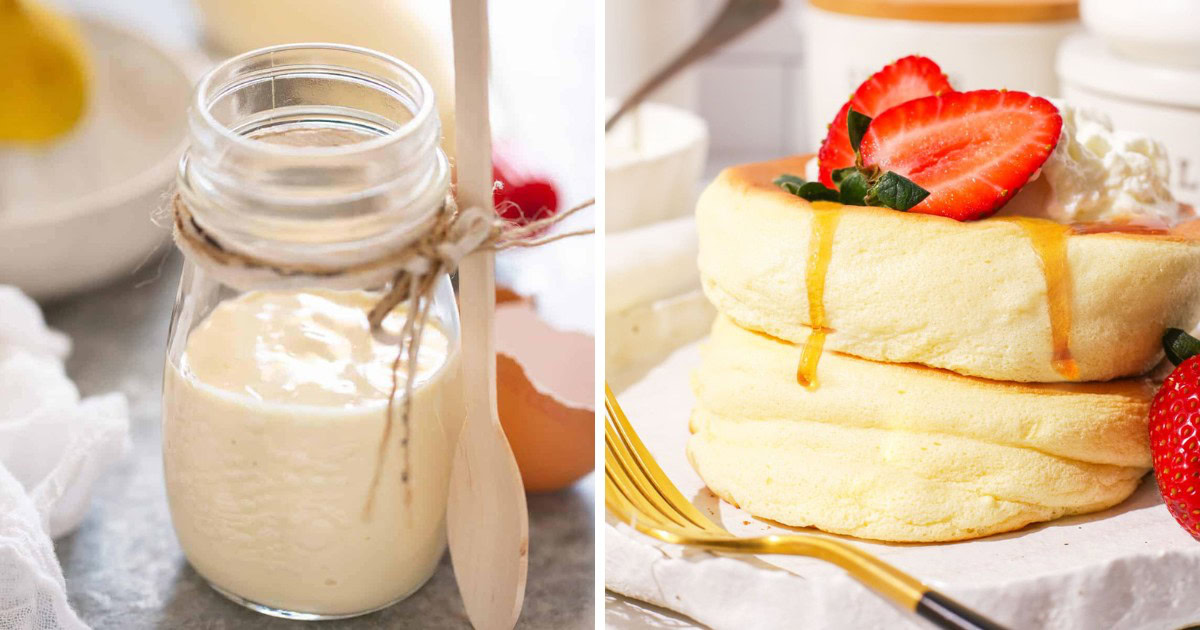This post may contain affiliate links.
Inside: Explore a variety of mouthwatering chicken casserole recipes that will make your weeknight dinners a breeze. Try these tasty dishes today!
Looking for the best chicken casserole recipes? Look no further! Whether you’re a seasoned home cook or just starting out in the kitchen, we’ve got you covered with a collection of mouthwatering chicken casserole recipes.
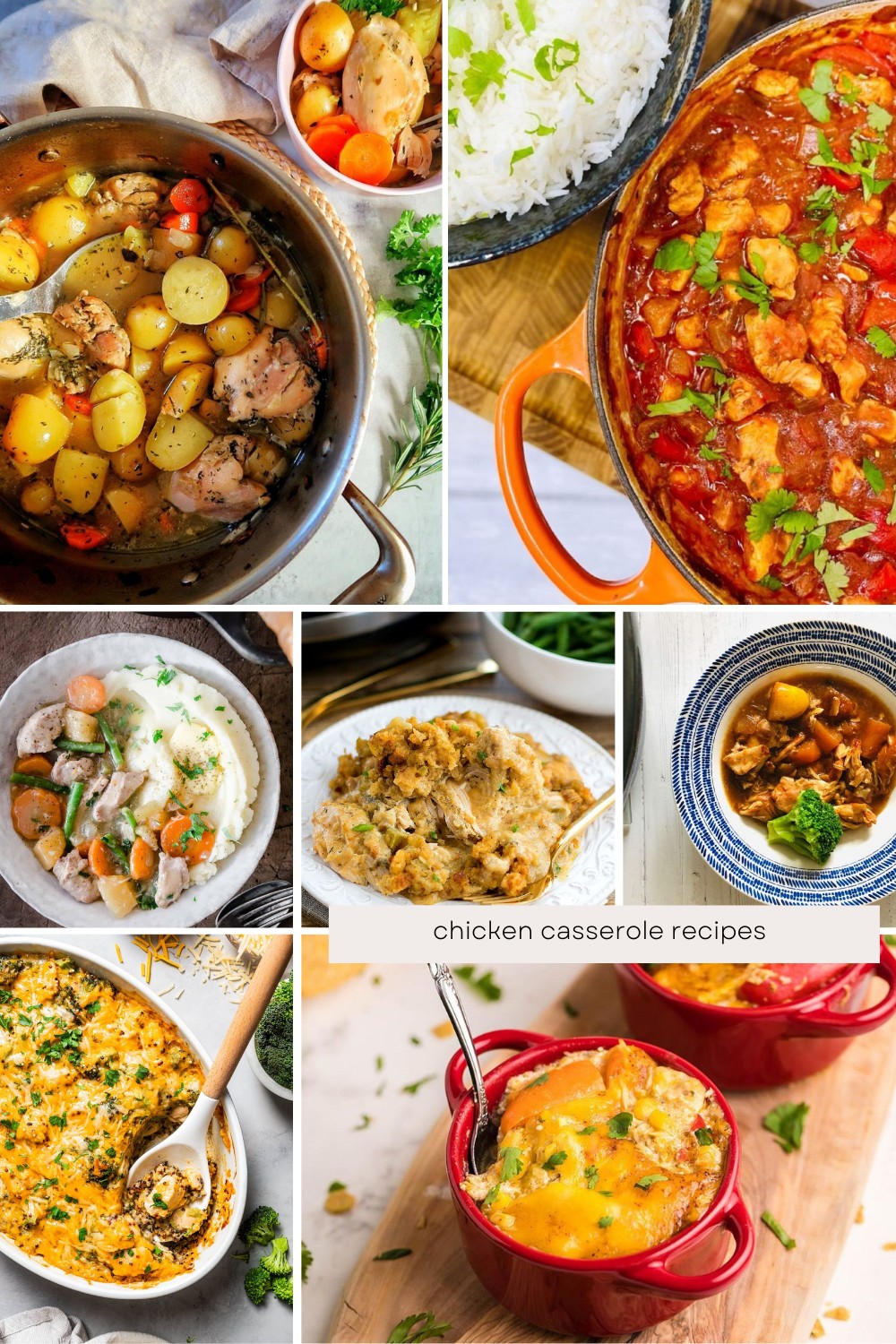
You will find:
- Easy recipes for delicious chicken casseroles
- Comforting classics and creative twists cooked in a casserole dish
- Flavorful, hearty, and delicious dishes
- Perfect for weeknight meals
- New go-to dishes to add to your weekly meal plan
The Best Chicken Casserole Recipes
Scroll the list and when you find something that tickles your tastebuds click on the link below the picture to go to the recipe.
You know you are going to want to come back to this list time and time again so be sure to save it – just hit the heart down there in the bottom corner!
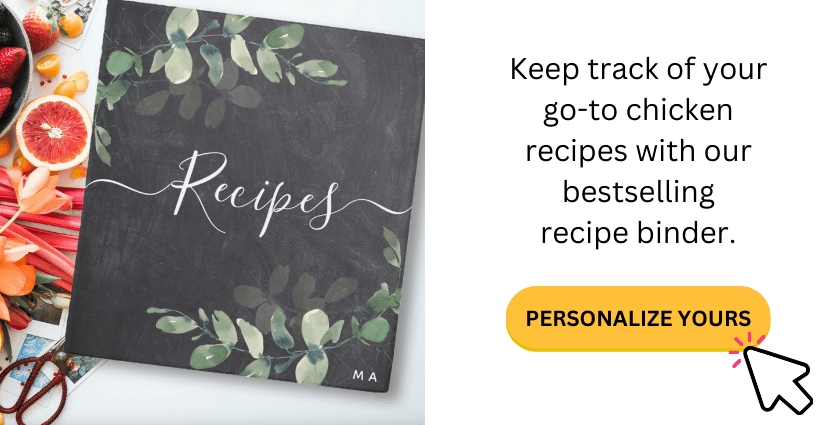
Super Easy Slow Cooker Chicken Enchilada Casserole
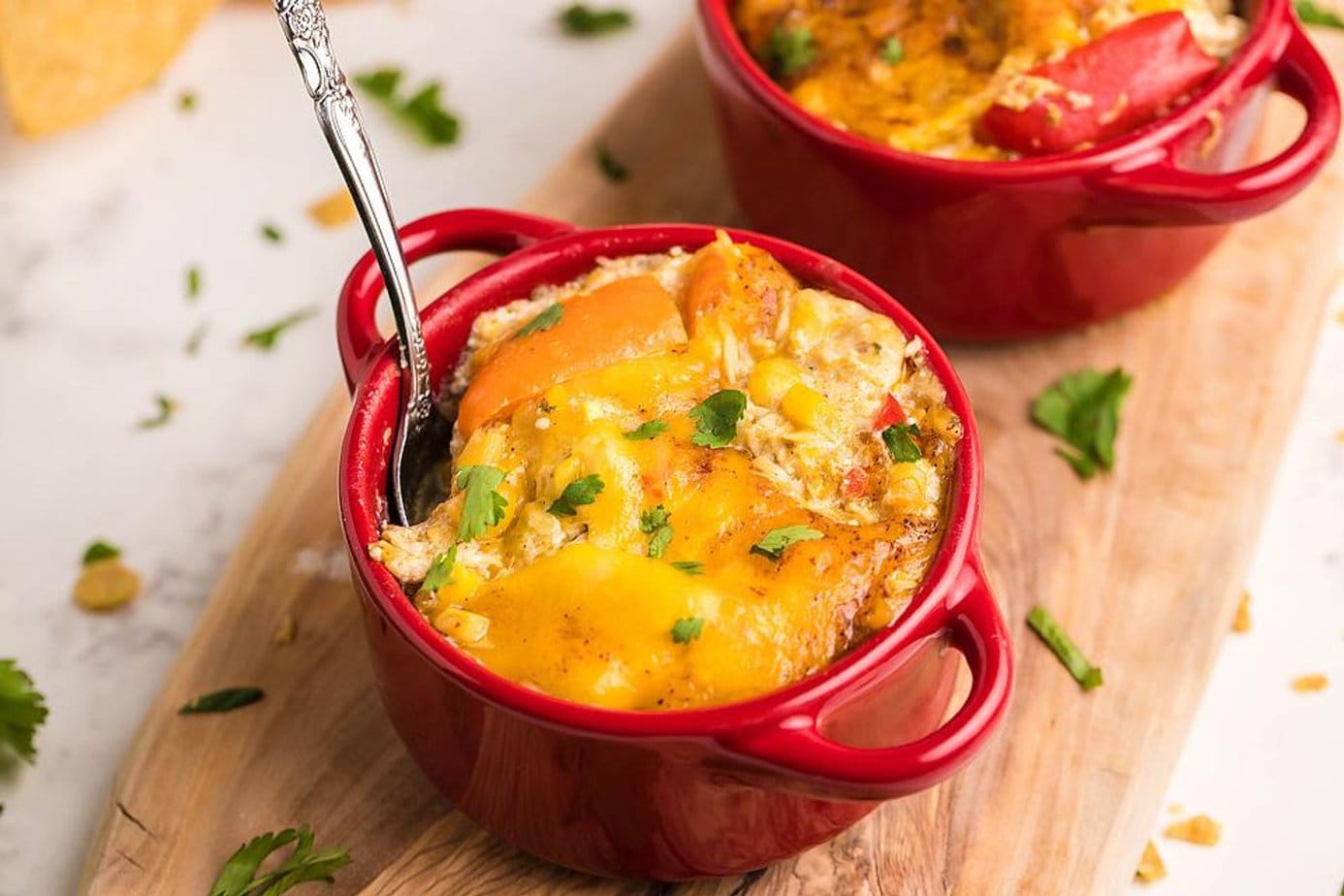
Although you don’t have to slow cook a chicken enchilada casserole, it really is the best way. And that’s why this easy enchilada casserole recipe is so good and easy to make with chicken breasts and staple ingredients. If you are looking for a slow cooker enchilada recipe or a crock pot recipe with chicken, this is one to try out!
Keto Cauliflower-Chicken Au Gratin Casserole with Bacon
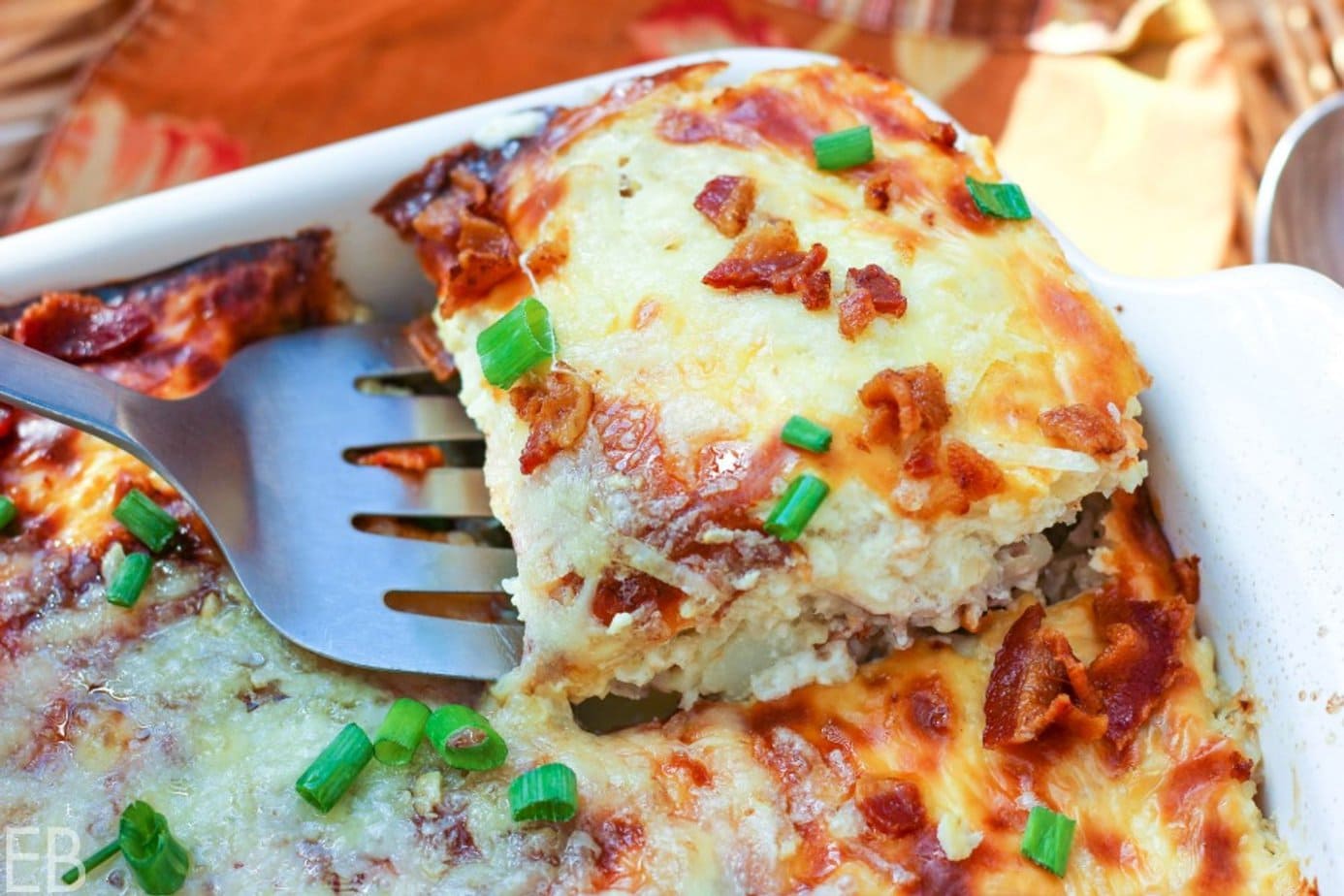
This Cauliflower-Chicken Au Gratin Casserole with Bacon is totally delicious and healthy too! It’s Keto, Low-Carb, Primal and GAPS diet-friendly. The delicious nourishment comes from a lot of fat!
Easy Chicken Stuffing Casserole – A Cozy, Heartwarming Dish

This Chicken Stuffing Casserole is a cozy dish made of a creamy chicken and veggie filling topped with fluffy stuffing and baked to a golden brown until warm and bubbly. It’s a perfect winter chicken recipe!
Creamy Chicken and Broccoli Casserole – The Perfect All-In-One Meal
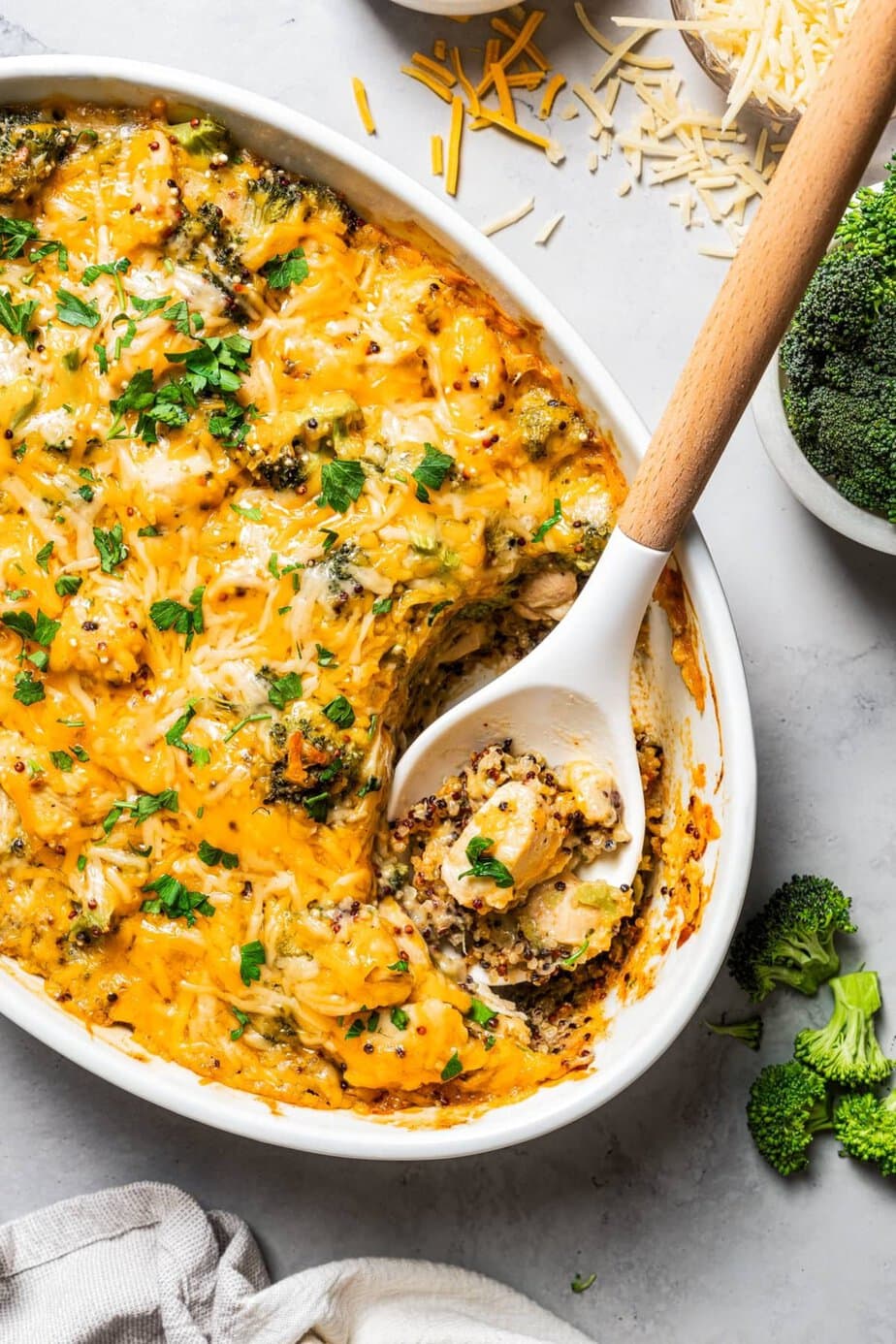
This light and creamy chicken and broccoli casserole is the perfect all-in-one meal. It’s made with tender chicken, broccoli, chewy quinoa, and cheddar cheese all baked in a creamy sauce.
Crockpot Chicken and Dressing Casserole
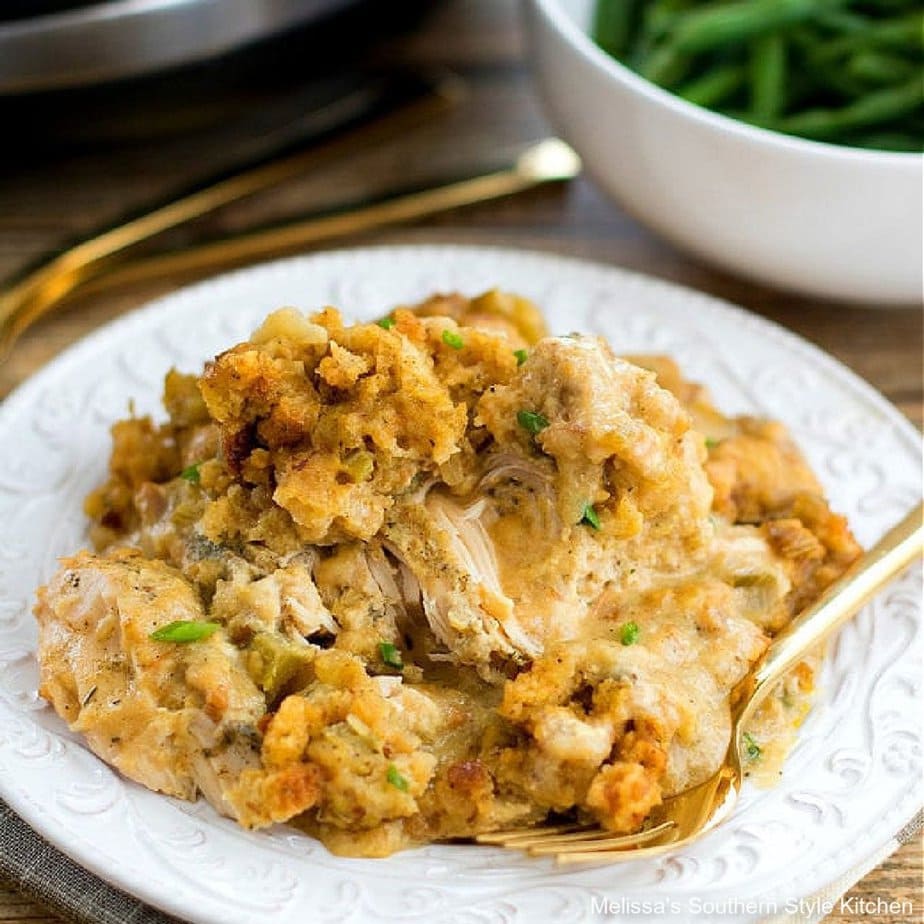
This homestyle Crockpot Chicken and Dressing Casserole is packed with flavor and can be served straight from your slow cooker. Enjoy a heaping helping for dinner with a side of homemade mashed potatoes and green beans for a comfort food feast any time of year.
Easy Gluten-Free Chicken Casserole
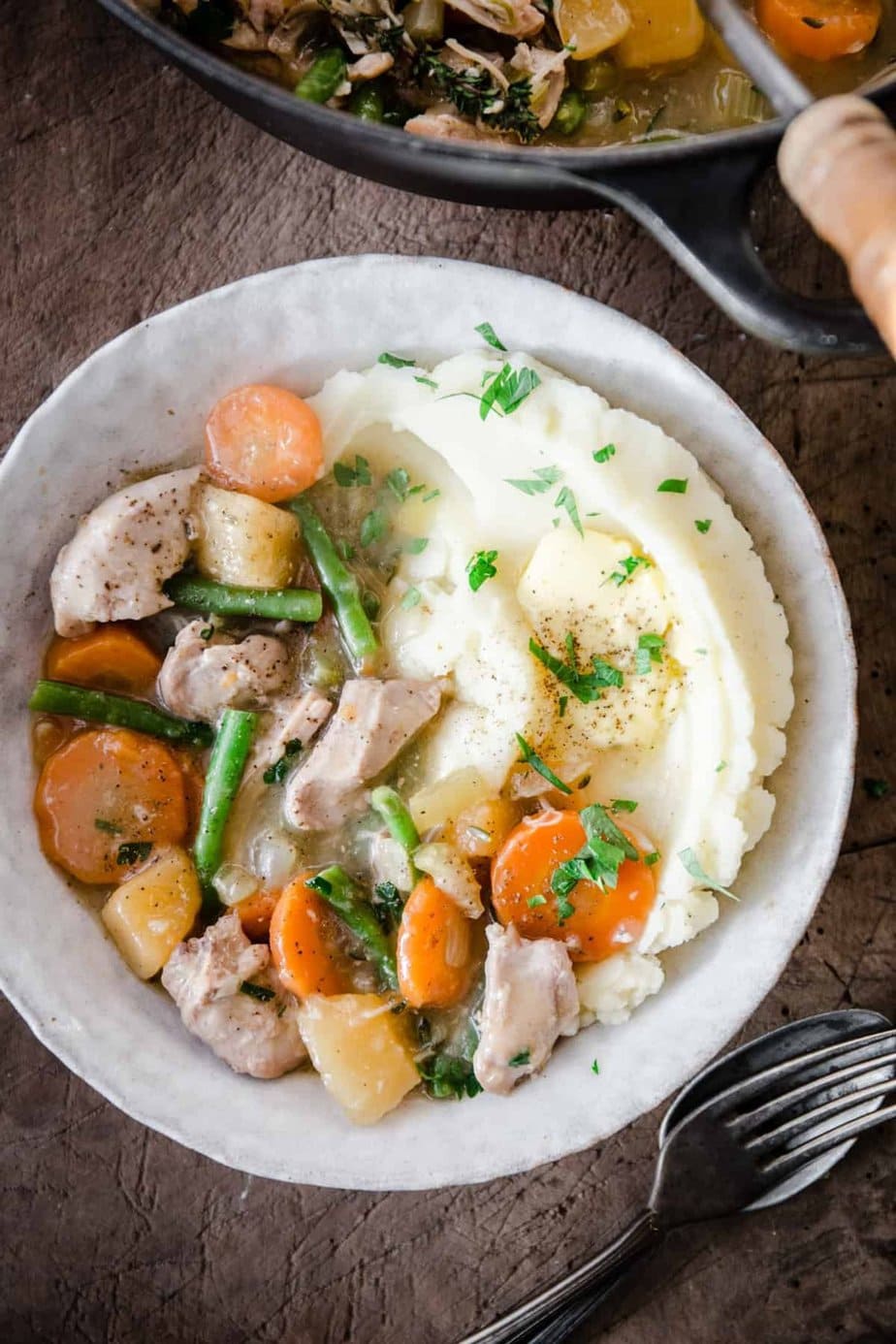
This easy Gluten-Free Chicken Casserole is healthy and hearty comfort food. It’s full of tender chicken, fresh tasty vegetables and a flavourful gravy.
Cheesy Chicken Fajita Casserole
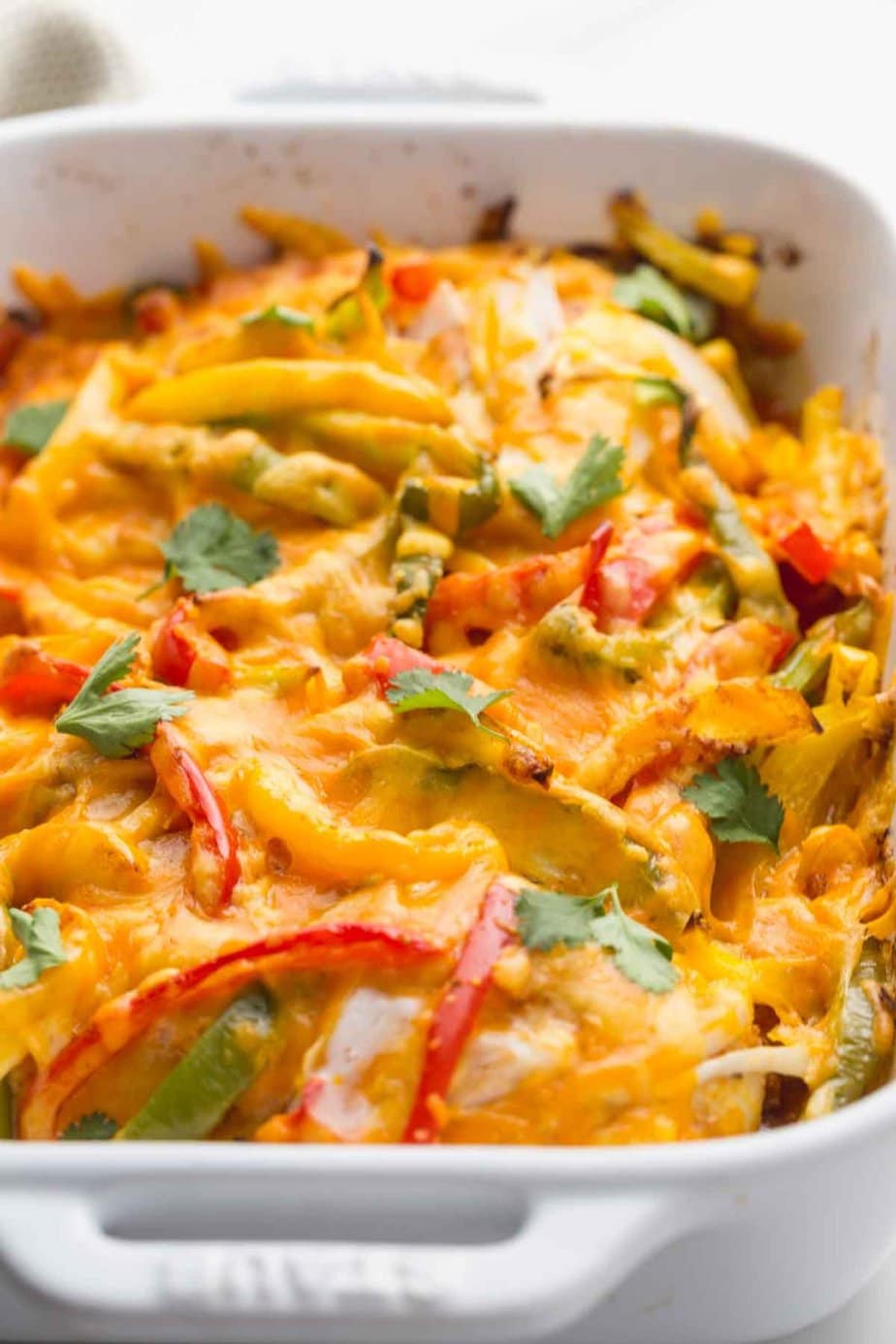
This Chicken Fajita Casserole is a family-friendly meal made in just ONE dish! It’s a terrific dinner idea that you can get on the table in under 40 minutes.
Mediterranean Stove Top Chicken Casserole
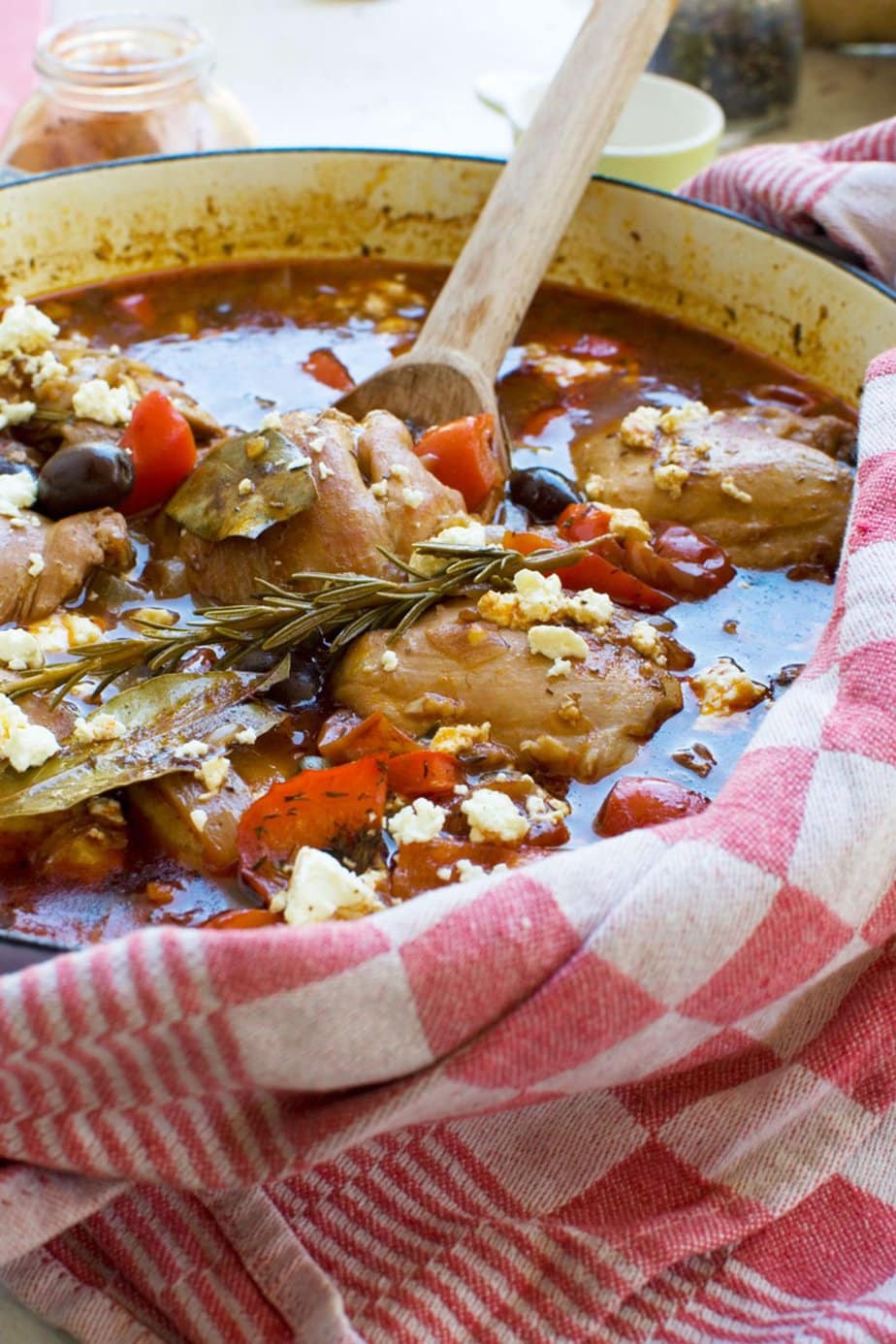
Mediterranean diet lovers rejoice! You’ll love this stove top chicken casserole with cherry tomatoes, bacon, olives and feta. It’s easy, healthy, and stuffed with delicious Mediterranean flavours!
Slow Cooker Chicken Casserole with Crispy Bacon
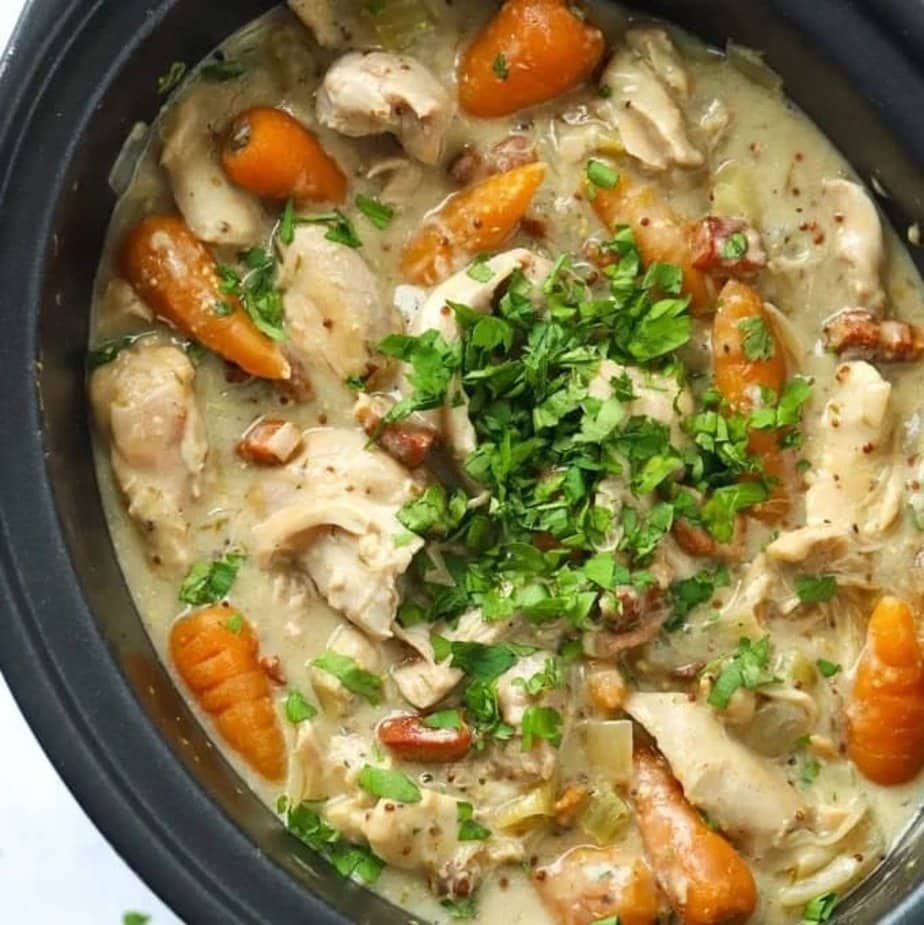
Comfort food without the trouble. This Slow Cooker Chicken Casserole recipe is quick to prepare with a creamy sauce with crispy bacon bits. It really is coziness in a bowl!
French Chicken Casserole
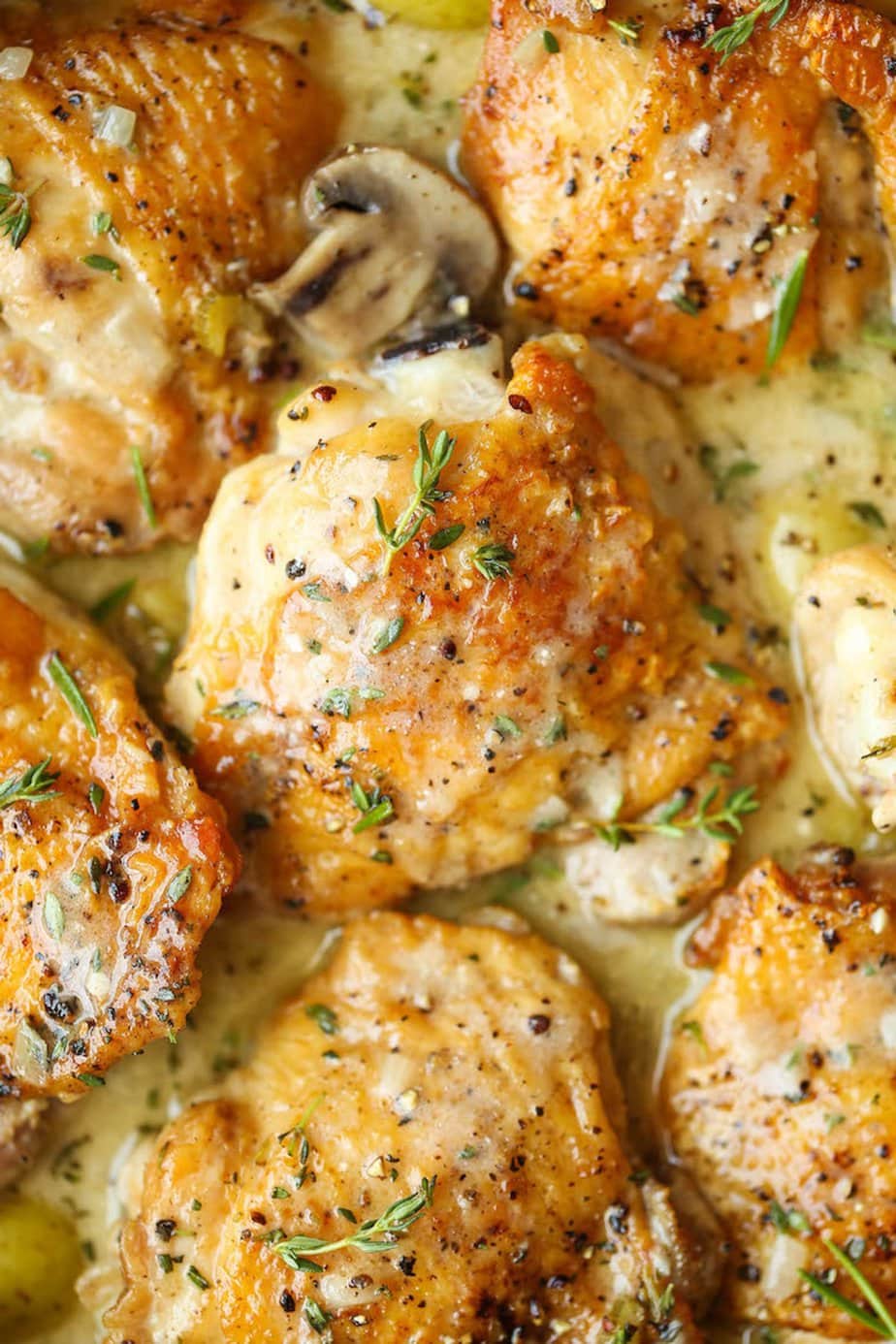
This French Chicken Casserole recipe produces the coziest, most wholesome meal. With golden brown chicken, tender potatoes, white wine, fresh rosemary + thyme it’s perfect for family dinners but good enough for company!
Slow Cooker Chicken Casserole Recipe (Easy To Prepare)
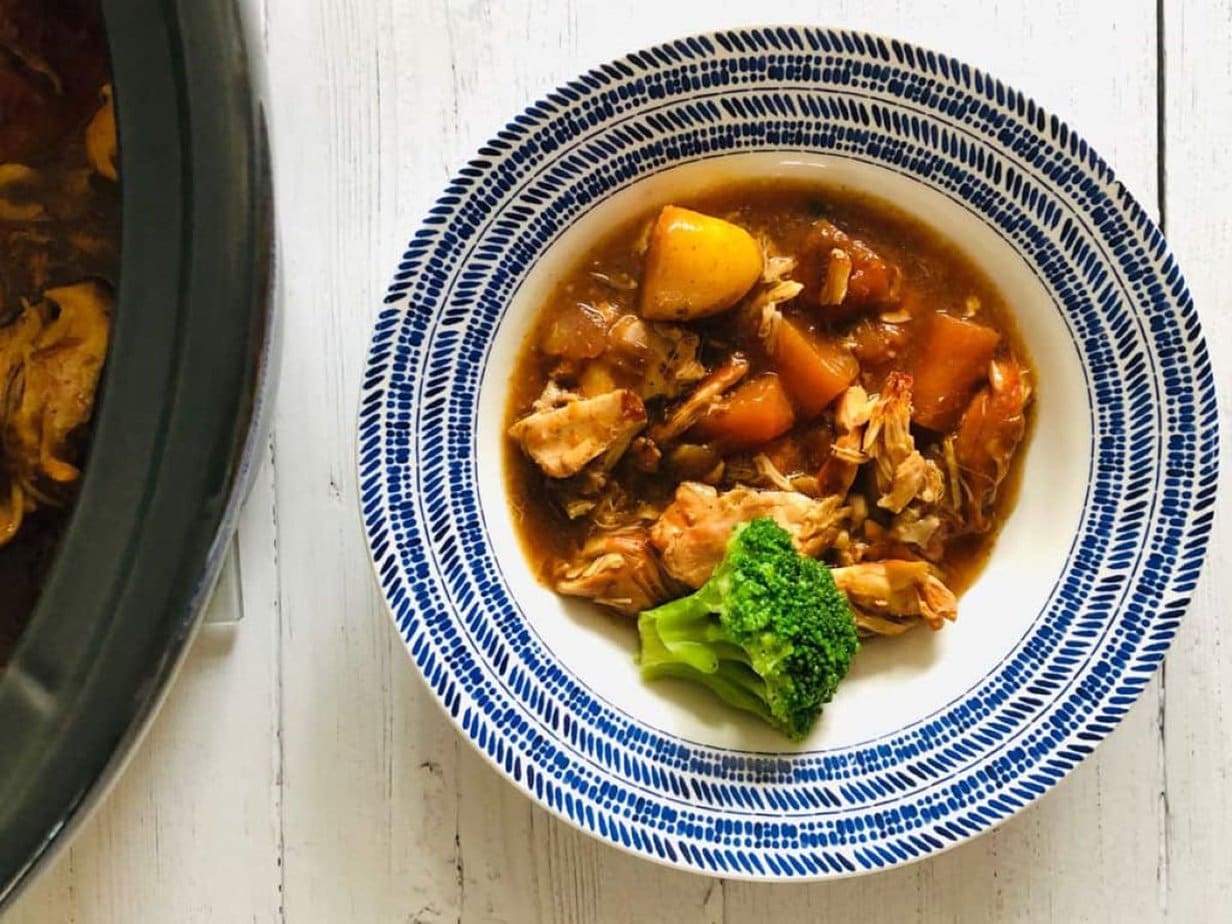
This slow cooker chicken casserole recipe will become a firm favourite in your house because you can eat it it year round. It’s the easiest way to set off a meal in the morning and have it ready to eat at dinner time!
Slow Cooker Chicken Casserole
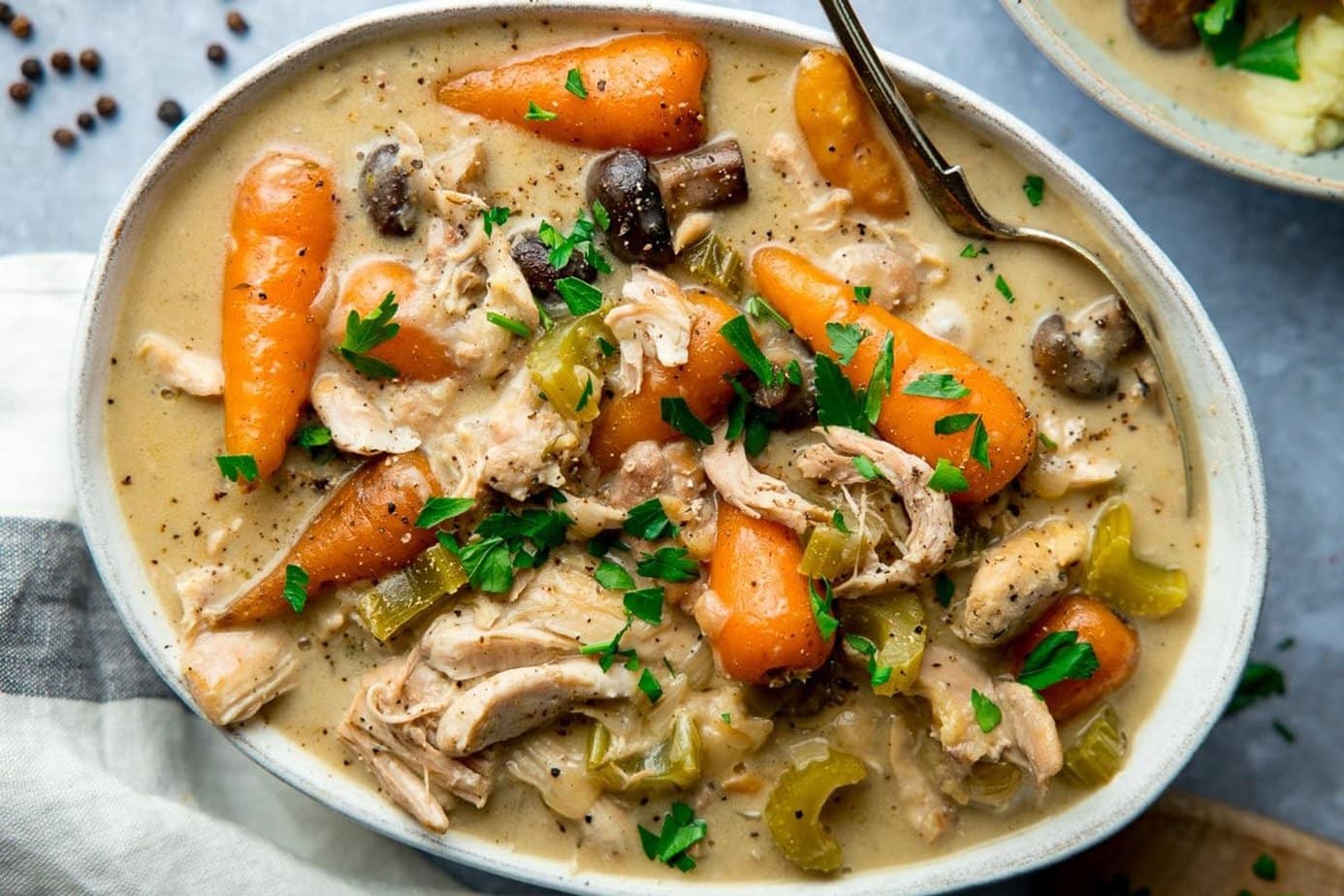
This warming delicious slow-cooked chicken casserole has fall-apart meat, lovely veggies and a seasoned creamy sauce.
Fajita Chicken Breasts Casserole
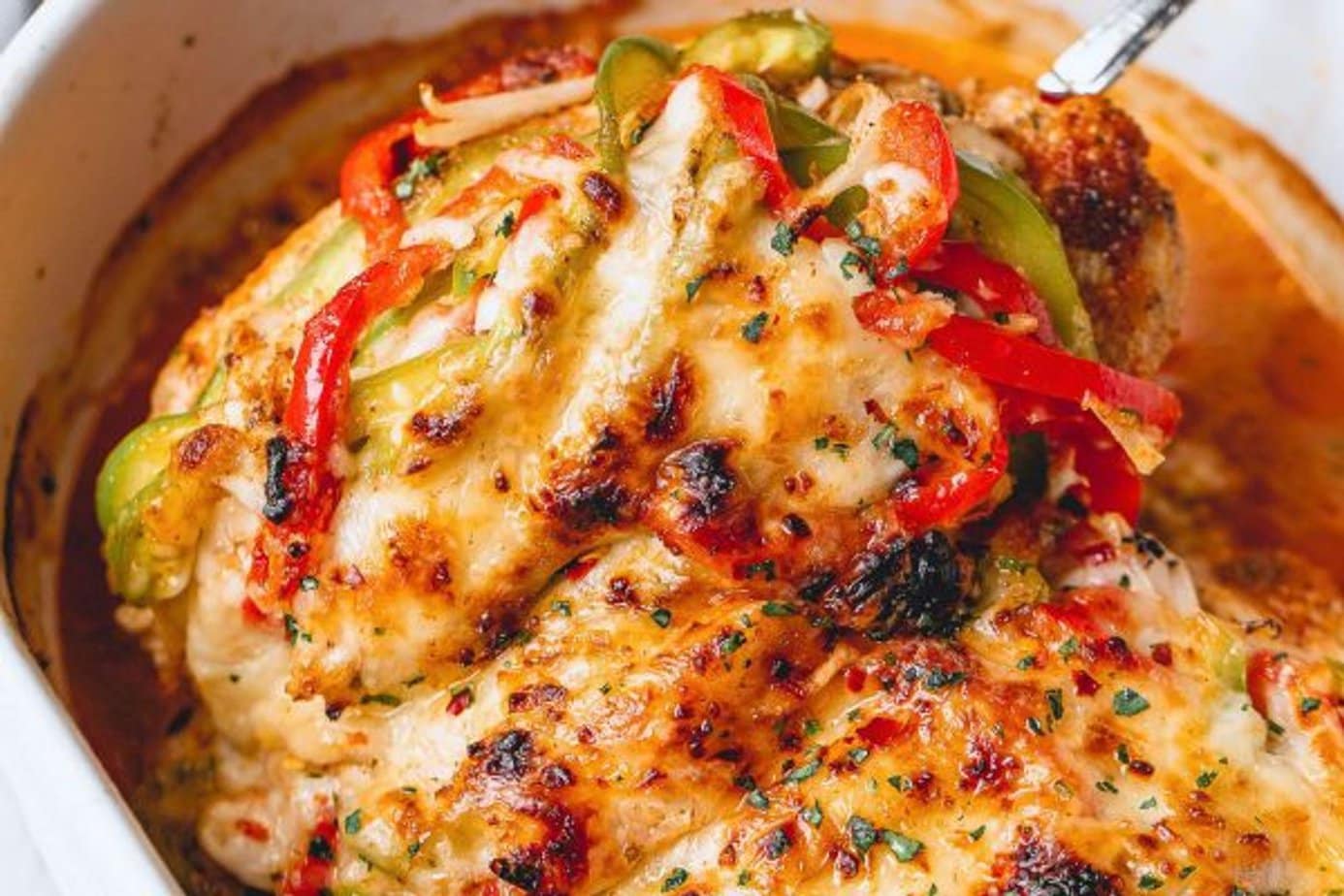
This yummy Fajita Chicken breasts Casserole recipe is packed with flavor and so quick to throw together!
Spicy Chicken Casserole Recipe
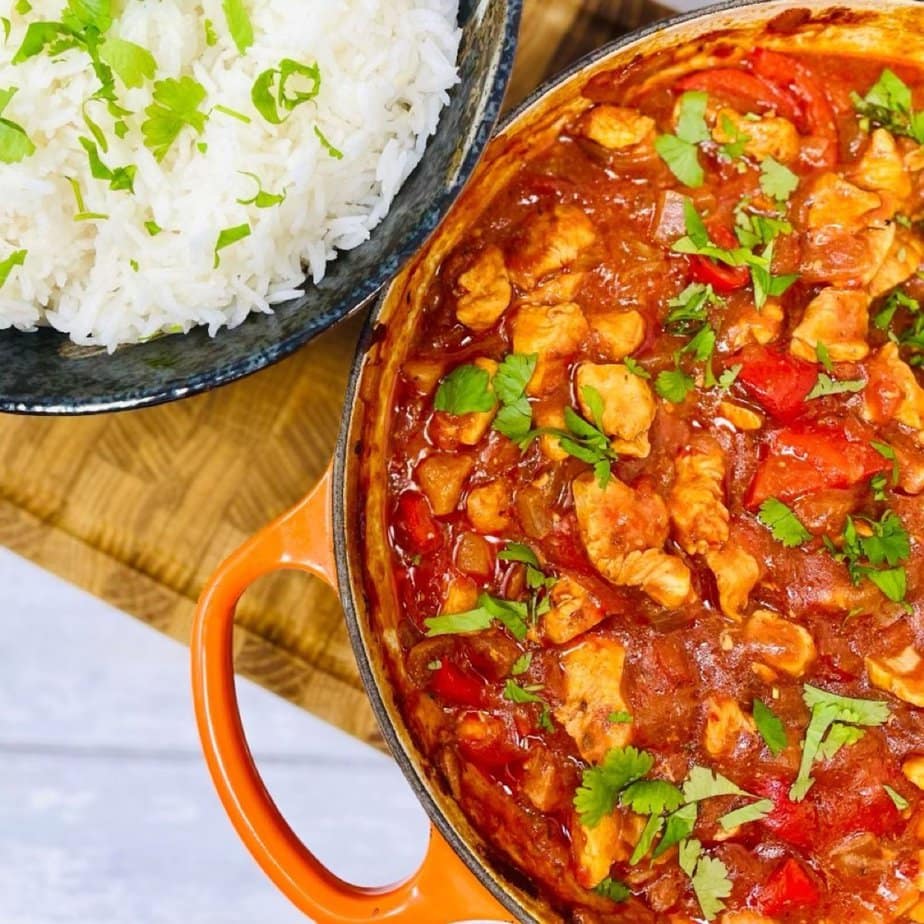
This spicy chicken casserole recipe is super tasty. Flavoured with BBQ sauce and a kick of heat from chilli flakes, this easy midweek dinner will be a total family favourite in no time!
Simple Chicken Casserole Recipe
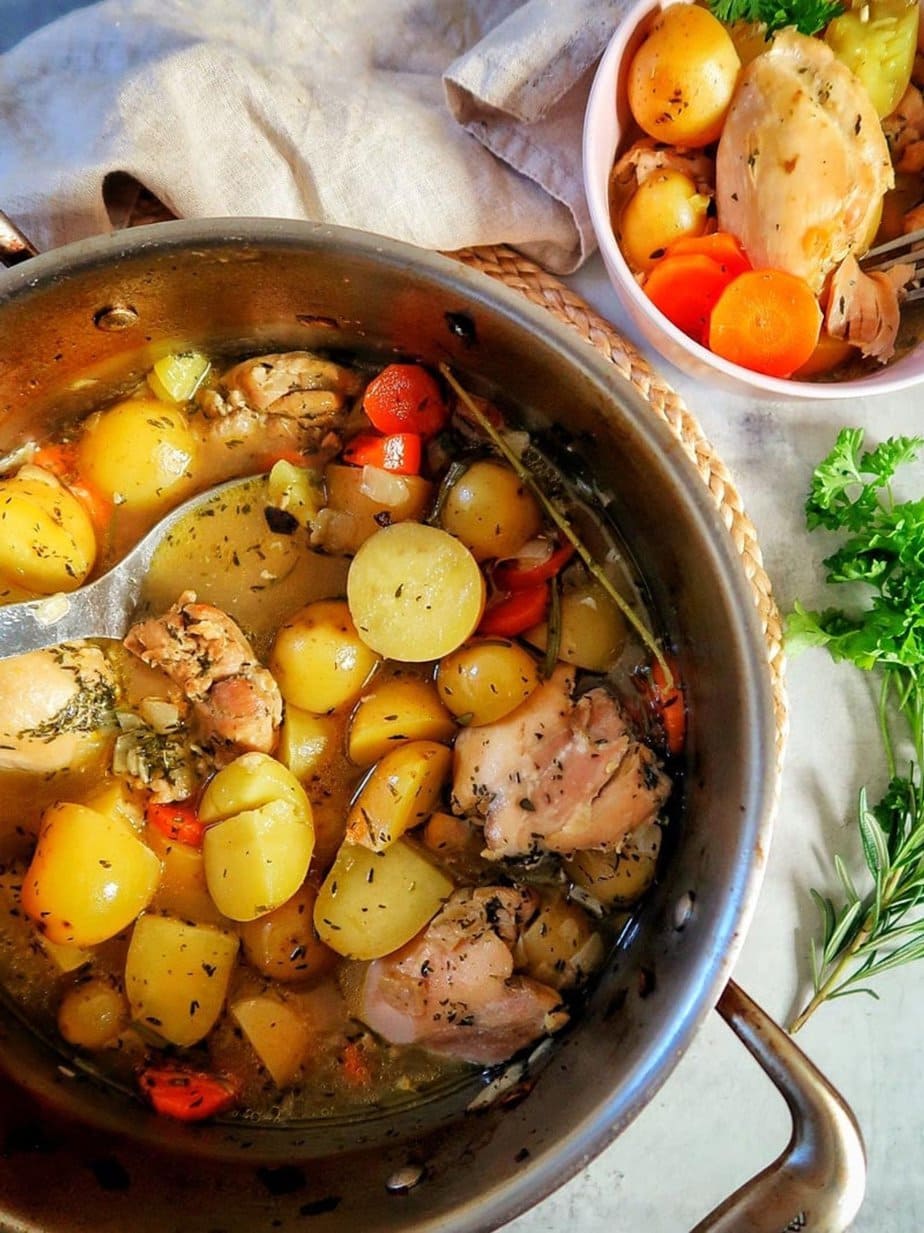
Sometimes the simplest meals are the best- you just good ingredients and simple flavours. This simple Chicken casserole is one of those things, you can strip it back to the basics and it still tastes so good!
Creamy Ranch Chicken Casserole Recipe
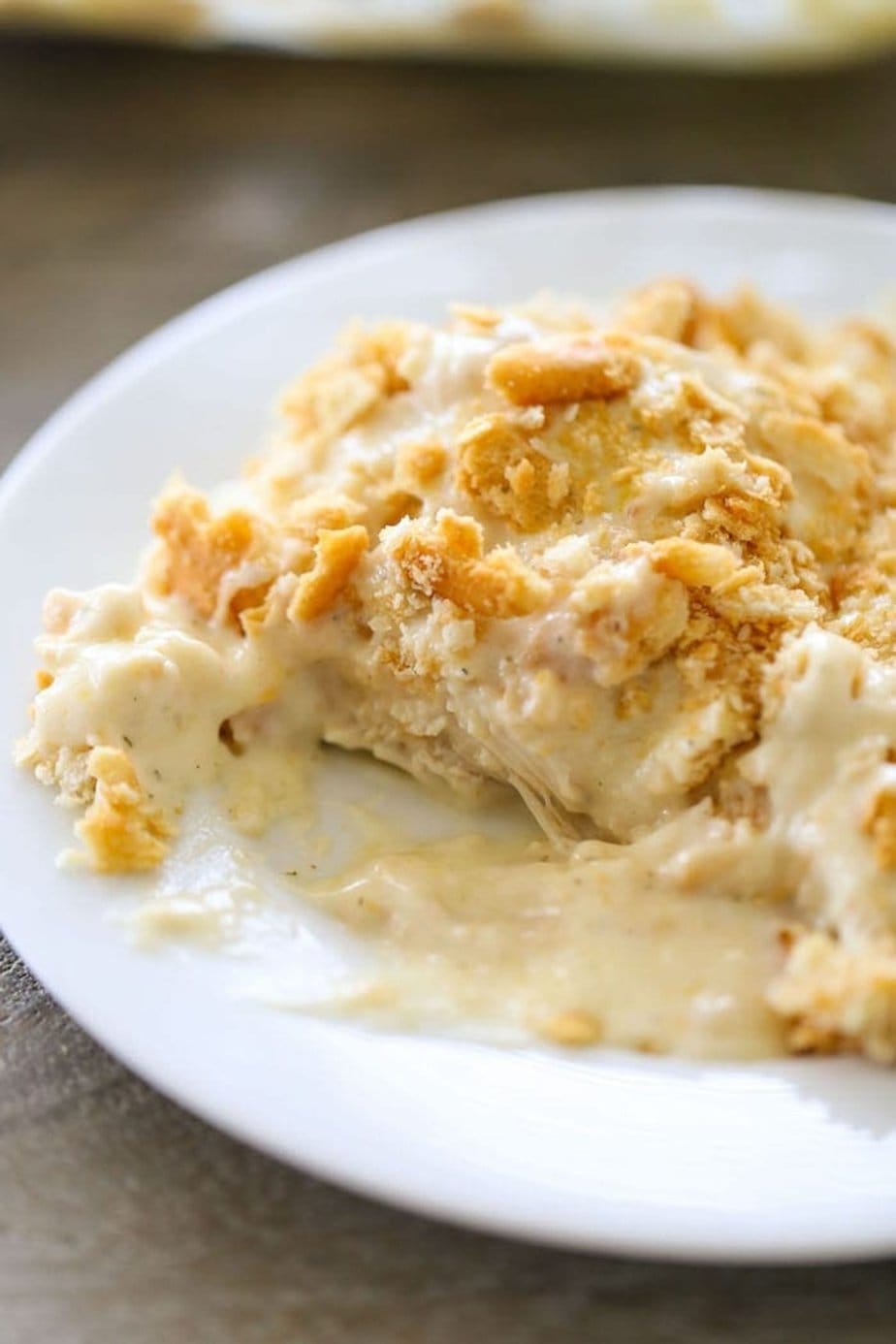
This Creamy Ranch Chicken Casserole recipe is SO simple to make! Just pop it in the oven and enjoy a tasty baked casserole dinner the whole family will love!
Reader Questions
Do you bake casserole with or without foil?
When baking a chicken casserole, whether to use foil or not depends on the recipe and your desired outcome. Foil can be used to cover the casserole dish during the initial stages of baking to help retain moisture and prevent the top from browning too quickly. This is particularly useful if the casserole contains ingredients that may dry out easily.
If a recipe specifies covering with foil, make sure to remove it during the latter part of the cooking time to allow the top to brown and create a desirable texture. On the other hand, if your recipe doesn’t mention foil, it likely means the dish is intended to bake uncovered, allowing the top to crisp up. Always refer to the specific instructions in your recipe to ensure the best results for your chicken casserole.
What are the basic components of a casserole?
The basic components of a casserole typically include:
- Protein: This is often the main ingredient and can be chicken, beef, pork, turkey, or even vegetarian options like beans or tofu.
- Vegetables: A variety of vegetables can be used, such as onions, carrots, celery, bell peppers, mushrooms, and more. These add flavor, texture, and nutritional value to the casserole.
- Starch: Common starch components include rice, pasta, potatoes, or grains. These help provide a hearty base for the casserole.
- Liquid or Sauce: This binds the ingredients together and adds moisture. It could be broth, cream, tomato sauce, or a combination of liquids. The sauce often includes seasonings and herbs for flavor.
- Cheese: Many casseroles include cheese, either mixed into the casserole or sprinkled on top. This adds richness and a savory flavor.
- Toppings: Some casseroles have a crispy or crunchy topping, often made with breadcrumbs, crushed crackers, or cheese. This adds texture and visual appeal.
Remember, the beauty of casseroles is their versatility, so you can customize these components based on your preferences and the type of casserole you’re making.
How do you fix a soggy casserole?
Fixing a soggy casserole can be a bit challenging, but here are some tips to help salvage the dish:
- Remove Excess Liquid: If there’s excess liquid pooling in the casserole, carefully drain it off. Use a spoon or turkey baster to remove as much liquid as possible without disturbing the ingredients.
- Bake Longer: Place the casserole back in the oven and bake it uncovered for a longer period. This will help evaporate excess moisture and crisp up the top.
- Increase Oven Temperature: If time allows, increase the oven temperature slightly and continue baking. A higher temperature can help remove moisture more efficiently and enhance the browning of the top.
- Use a Broiler: If the casserole is mostly cooked but needs additional browning, consider using the broiler for a few minutes. Keep a close eye on it to prevent burning.
- Add Crunchy Toppings: If the top is soggy but the rest of the casserole is cooked, consider adding a layer of crunchy toppings like breadcrumbs or crushed Ritz crackers. Bake or broil until the top is golden and crisp.
- Let It Sit: Allow the casserole to sit for a few minutes after removing it from the oven. This can help the excess moisture redistribute, and the dish may firm up slightly as it cools.
- Reheat in a Dry Pan: If serving portions individually, consider reheating them in a dry pan on the stovetop. This can help remove additional moisture.
Remember that the success of these methods depends on the specific circumstances causing the sogginess, so it might require some experimentation. It’s always a good idea to adjust recipes in the future to prevent similar issues.
Can you use rotisserie chicken in a casserole?
Yes, using rotisserie chicken in a casserole is a fantastic idea! Rotisserie chicken is already cooked, flavorful, and can add a convenient and delicious twist to your casserole recipes. Here’s how you can incorporate rotisserie chicken into a casserole:
- Shred or Chop the Chicken: Remove the meat from the rotisserie chicken, discarding the skin and bones. Shred or chop the chicken into bite-sized pieces.
- Substitute or Combine with Raw Chicken: You can either use rotisserie chicken as a substitute for raw chicken in a casserole recipe or combine it with other raw ingredients. If your recipe calls for cooked chicken, simply add the shredded rotisserie chicken to the other casserole ingredients. If the recipe calls for raw chicken, you might need to adjust the cooking time since the chicken is already cooked.
- Enhance Flavor: Rotisserie chicken brings a depth of flavor to the casserole, so consider the seasoning used on the rotisserie chicken when adjusting your overall seasoning for the casserole. This can add a savory and seasoned taste to the dish.
- Convenience: Using rotisserie chicken is a time-saving option, making the preparation of the casserole quicker and more convenient. It’s a great solution for busy days when you want a home-cooked meal without the hassle of cooking raw chicken.
- Versatility: Rotisserie chicken works well in various casserole recipes, such as chicken and rice casseroles, enchilada casseroles, or chicken noodle casseroles. Its versatility allows you to experiment with different flavors and cuisines.
Remember to check your casserole recipe for specific instructions on incorporating cooked chicken, and adjust cooking times accordingly. Using rotisserie chicken can add a delicious and flavorful twist to your casseroles while saving you time in the kitchen.
Can you freeze a chicken casserole to eat later?
Yes, you can freeze a chicken casserole to eat later. Freezing casseroles is a convenient way to prepare meals in advance and save time on busy days. Here are some steps to help you freeze a chicken casserole:
- Cool the Casserole: Allow the chicken casserole to cool to room temperature before freezing. Rapid cooling helps prevent the formation of ice crystals, which can affect the texture of the dish.
- Portioning: Consider dividing the casserole into individual portions before putting in the freezer. This makes it easier to thaw and reheat only the amount you need, reducing waste.
- Freezer-Safe Containers: Use freezer-safe containers or resealable plastic bags for freezing. Make sure to remove as much air as possible from the containers or bags to minimize the risk of freezer burn.
- Labeling: Clearly label the containers or bags with the name of the casserole, the date it was prepared, and any reheating instructions. This helps you keep track of what’s in the freezer and ensures you use the oldest items first.
- Wrap Well: If using a casserole dish, cover it tightly with plastic wrap or aluminum foil before placing it in the freezer. For individual portions in containers or bags, ensure they are sealed securely.
- Freeze Quickly: Place the casserole in the coldest part of your freezer. The quicker the casserole freezes, the better the quality will be when you decide to thaw and reheat it.
- Thawing: When ready to eat, transfer the frozen casserole to the refrigerator and allow it to thaw overnight. Alternatively, you can use the defrost setting on your microwave for smaller portions.
- Reheating: Reheat the thawed casserole in the oven until it reaches an internal temperature of 165°F (74°C). Make sure it’s heated thoroughly to ensure the safety of the dish.
Keep in mind that the texture of certain ingredients, such as potatoes or pasta, may change slightly after freezing and reheating. However, many chicken casseroles freeze well and can be a convenient option for meal prep.
What is the difference between a casserole and a stew?
While both casseroles and stews involve cooking ingredients together in a single dish, they have distinct characteristics:
Cooking Method:
- Casserole: Casseroles are typically baked in the oven. They often involve layering ingredients in a baking dish and baking them until they are cooked through and the flavors meld.
- Stew: Stews are usually prepared on the stovetop. They involve simmering ingredients in a pot with enough liquid to cover them, creating a flavorful broth.
Liquid Content:
- Casserole: Casseroles can have varying levels of liquid, but they often have less compared to stews. The liquid in casseroles is generally used to keep the dish moist rather than forming a substantial broth.
- Stew: Stews have a significant amount of liquid, creating a hearty broth that infuses flavors into the ingredients. The liquid in a stew is an integral part of the dish.
Ingredients and Texture:
- Casserole: Casseroles often include a combination of proteins, vegetables, starches, and a binder like sauce or cheese. The goal is to create a cohesive, layered dish with distinct components.
- Stew: Stews typically have chunks of meat or vegetables cooked in a liquid broth until tender. The ingredients in a stew are often more integrated, resulting in a unified texture.
Cooking Time:
- Casserole: Casseroles usually require longer cooking times in the oven, allowing the ingredients to meld and flavors to develop.
- Stew: Stews have relatively shorter cooking times on the stovetop, as the simmering process helps tenderize the ingredients relatively quickly.
Presentation:
- Casserole: Casseroles are often presented with the different layers of ingredients visible. The top may be browned or crusty.
- Stew: Stews have a more unified appearance, with ingredients submerged in a flavorful broth.
While both casseroles and stews involve cooking multiple ingredients together, the key differences lie in the cooking method, liquid content, texture, and presentation. Casseroles are baked with less liquid and distinct layers, while stews are simmered on the stovetop with a substantial broth, resulting in a more integrated dish.
